Trees and other kinds of vegetation have proven to be remarkably resilient to the intense radiation around the nuclear disaster zone.
Chernobyl has become a byword for catastrophe. The 1986 nuclear disaster, recently brought back into the public eye by the hugely popular TV show of the same name, caused thousands of cancers, turned a once populous area into a ghost city, and led to an exclusion zone 2,600 sq km (1,000 sq miles) in size.
But Chernobyl’s exclusion zone isn’t devoid of life. Wolves, boars and bears have returned to the lush forests surrounding the old nuclear plant in northern Ukraine. And when it comes to vegetation, all but the most vulnerable and exposed plant life survived. Even in the most radioactive areas of the zone, vegetation was recovering within three years. (Read about the vast sarcophagus built to entomb the Chernobyl site)
Humans and other mammals and birds would have been killed many times over by the radiation that plants in the most contaminated areas received. So why is plant life so resilient to radiation and nuclear disaster?
You might also like:
To answer this question, we first need to understand how radiation from nuclear reactors affects living cells. Chernobyl’s radioactive material is “unstable” because it is constantly firing out high energy particles and waves that smash cellular structures or produce reactive chemicals which attack the cells’ machinery.
Vast areas of land in Ukraine and Belarus remain off limits due to radioactive contamination, but plant life in these areas is flourishing (Credit: Getty Images)
Most parts of the cell are replaceable if damaged, but DNA is a crucial exception. At higher radiation doses, DNA becomes garbled and cells die quickly. Lower doses can cause subtler damage in the form of mutations altering the way that the cell functions – for example, causing it to become cancerous, multiply uncontrollably, and spread to other parts of the body.
In animals this is often fatal, because their cells and systems are highly specialised and inflexible. Think of animal biology as an intricate machine in which each cell and organ has a place and purpose, and all parts must work and cooperate for the individual to survive. A human cannot manage without a brain, heart or lungs.
Because they can’t move, plants have no choice but to adapt to the circumstances in which they find themselves
Plants, however, develop in a much more flexible way. Because they can’t move, they have no choice but to adapt to the circumstances in which they find themselves. Rather than having a defined structure as an animal does, plants make it up as they go along. Whether they grow deeper roots or a taller stem depends on the balance of chemical signals from other parts of the plant and nearby plants, as well as light, temperature, water and nutrient conditions.
Critically, unlike animal cells, almost all plant cells have the capacity to create new cells of any type the plant needs. This is why a gardener can grow new plants from cuttings, with roots sprouting from what was once a stem or leaf.
The reactor explosion at Chernobyl has been directly linked to 54 deaths, but the radiation it released has been linked to thousands more (Credit: Getty Images)
All of this means that plants can replace dead cells or tissues much more easily than animals, whether the damage is due to being attacked by an animal or to radiation.
Chernobyl’s Red Forest
In the aftermath of the Chernobyl accident, a large patch of coniferous forest near the power plant turned a vivid orange and died as high levels of radiation swept over the area.
The dense woodland, about 4-6km² in size, became known as the Red Forest due to the colour the trees’ needles turned as the plants were poisoned. The area became a wasteland.
But within 30 years the Red Forest had almost completely regenerated, with deciduous trees like silver birch taking the place of the pines that had been there before.
A recent drone survey revealed the Red Forest still has hotspots with staggering levels of radiation.
Although a major fire in 2016 destroyed a large part of the forest, the drone footage reveals that trees, grasses and other plants are flourishing despite the high levels of radiation.
By Richard Gray
And while radiation and other types of DNA damage can cause tumours in plants, mutated cells are generally not able to spread from one part of the plant to another as cancers do, thanks to the rigid, interconnecting walls surrounding plant cells. Nor are such tumours fatal in the vast majority of cases, because the plant can find ways to work around the malfunctioning tissue.
Interestingly, in addition to this innate resilience to radiation, some plants in the Chernobyl exclusion zone seem to be using extra mechanisms to protect their DNA, changing its chemistry to make it more resistant to damage, and turning on systemsto repair it if this doesn’t work. Levels of natural radiation on the Earth’s surface were much higher in the distant past when early plants were evolving, so plants in the exclusion zone may be drawing upon adaptations dating back to this time in order to survive.
Populations of many plant and animal species are actually greater than they were before the disaster
Life is now thriving around Chernobyl. Populations of many plant and animal species are actually greater than they were before the disaster.
Given the tragic loss and shortening of human lives associated with Chernobyl, this resurgence of nature may seem surprising. Radiation does have demonstrably harmful effects on plant life, and may shorten the lives of individual plants and animals. But if life-sustaining resources are in abundant enough supply and burdens are not fatal, then life will flourish.
Wild horses among the rich wildlife that has flourished in the abandoned landscape around Chernobyl (Credit: Getty Images)
Crucially, the burden brought by radiation at Chernobyl is less severe than the benefits reaped from humans leaving the area. Now essentially one of Europe’s largest nature preserves, the ecosystem around the wrecked power plant supports more life than before, even if each individual cycle of that life lasts a little less.
In a way, the Chernobyl disaster reveals the true extent of our environmental impact on the planet. Harmful as it was, the nuclear accident was far less destructive to the local ecosystem than we were. In driving ourselves away from the area, we have created space for nature to return.
This article originally appeared on The Conversation, and is republished under a Creative Commons licence.
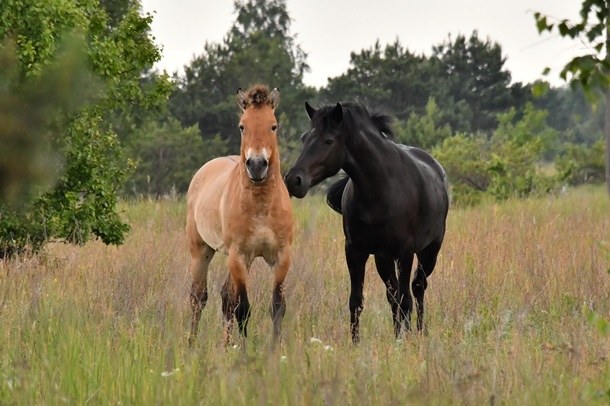
Волки, рыси и даже медведи
Гащак работает в зоне отчуждения с 1990 года и говорит, что научную работу там преимущественно проводили энтузиасты. Биосферный заповедник в Чернобыльской зоне заработал только в апреле 2017 года.
По его словам, несмотря на радиацию, отсутствие людей в зоне делает свое дело: там появляются уникальные виды животных и птиц.
Растет количество лосей, оленей, волков, лис. В зоне отчуждения ученым удалось зафиксировать 185 видов птиц. При этом ушли те виды животных, которые были связаны с человеком - голуби, домовые мыши, крысы, воробьи.

Установленные ловушки с видео- и фотокамерами позволяют говорить о том, что такие редкие виды, как неуловимая евразийская рысь. Последний раз ее видели в этом месте больше века назад.
Фотоловушки автоматически снимают все излучающие тепло объекты, которые движутся на расстоянии до 10-15 метров.
Исследования также показали, что волков в Чернобыльской зоне в семь раз больше, чем в соседних "чистых" регионах.
Каждая из популяций волков и рысей - самых крупных хищников зоны - в летний период составляет более ста особей. Рыси и волки в зоне занимают различные ареалы.
Оленей и лосей в зоне гораздо больше. По словам Гащака, оленей здесь около полутора тысяч особей, столько же может быть лосей.
В зоне появилось много "краснокнижных" черных аистов, которые любят селиться подальше от людей. Также зафиксированы 14 видов летучих мышей, три из которых занесены в международную Красную книгу: гигантская посиделка, широкоушка и прудовая ночница.
Сенсацией стал бурый медведь, которого зафиксировала фотоловушка Гащака в западной части зоны. Этот вид медведей не видели в зоне с конца 1980-х годов.
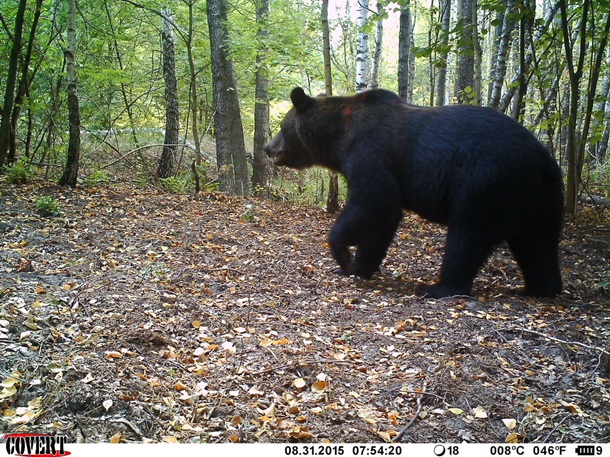
В районе пруда-охладителя, который стал мельче и превратился в систему озер, бывают орланы-белохвосты, кулики-сороки, черные аисты и другие птицы, характерные для Полесья.
Кроме того, в водоеме водится и разная рыба - речные виды, оставшиеся со времен, когда водоем создавали из реки Припять, озерные и те виды, которых разводили в местном рыбном комплексе.
Некоторые животные не боятся человека, поскольку не встречались с агрессией со стороны людей. Так, несколько лет назад журналисты сняли, как чернобыльская лиса сделала себе бутерброд.
Рыжиий лес
После аварии в условиях самой тяжелой радиационной обстановки сильно пострадала часть соснового леса, который примыкал к западной части станции.
В результате облучения погибло 5-10 квадратных километров соснового леса - так называемый Рыжий лес. Большую часть этих деревьев после аварии захоронили.
В конечном итоге эта территория заросла другими деревьями и кустарниками, и которые не буреют, несмотря на высокую степень загрязнения, хотя эта местность остается одним из самых загрязненных участков в зоне отчуждения.
"Здесь произошли первые выпадения после взрыва, а потом – после пожара. В результате, здесь были очень высокие дозовые нагрузки. И ученые, если что-то делали, то делали это быстро, перебежками. В результате о первых годах аварии известно не так уж и много", - рассказывает Гащак.
В 1990-х годах, когда дозовые уровни упали примерно в тысячу раз.
5 июня 2018 года Рыжий лес загорелся из-за сухой травы. Пламя распространилось на 10 гектаров. К ликвидации пожара привлекли 35 единиц техники и 150 человек. К моменту выхода материала пожар еще не потушили.

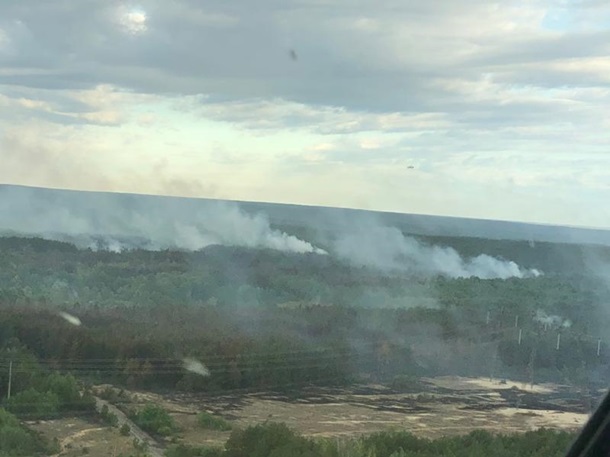
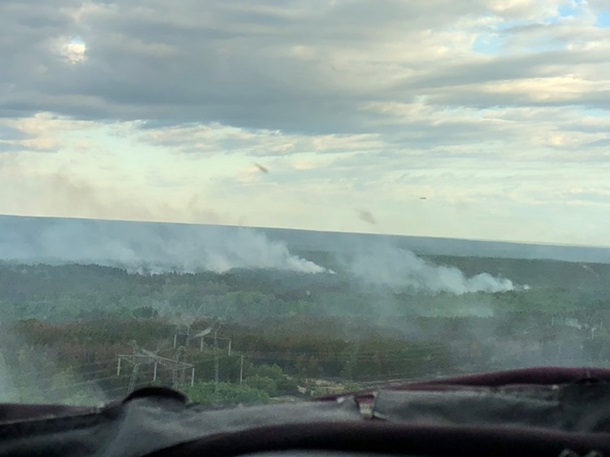
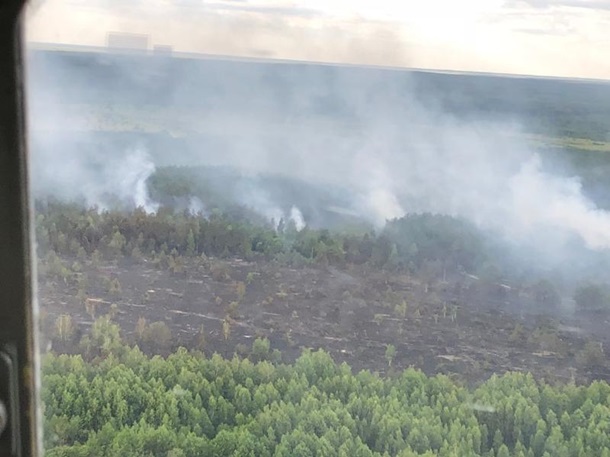
Рай для живой природы
Ранее Михаил Балонов, главный научный сотрудник российского Института радиации и гигиены и консультант Международного комитета ООН, описал зону отчуждение, как "рай на земле для живой природы".
"Людей там нет, а есть прекрасные леса, реки, озера. Это совершенно чудная природа украинского и белорусского полесья, и там живность развилась совершенно удивительным образом. Туда переселили лошадей Пржевальского... И они там, как в раю, развиваются", - сказал специалист.
Он объяснил, что животные в Чернобыльской зоне подвергаются несколько повышенному облучению, "но уровень уже такой, который ни к каким реальным последствиям не приводит".
"Эффекты на животных, конечно, были, и очень даже серьезные. Но были они, в основном, в 1986 году. Там были высокие уровни [радиационного фона], там звери некоторые подвергались большим дозам. А сейчас это можно выявить с большим трудом. То есть, они биологически есть, но на состояние здоровья и размножение животных они никак не влияют", - рассказал ученый.
В радиоактивной зоне Чернобыля флора и фауна не погибла, а расцвела!
То, что ученые обнаружили в чернобыльском лесу, шокировало весь мир!
На Украине действует проект, целью которого является исследование дикой природы вокруг Чернобыля. Ученые хотят выяснить, какие животные поселились на пораженных территориях. В отличие от зоны отчуждения Чернобыльской АЭС человек оказался более губительным для животных. Популяция диких животных здесь взлетела до безумного количества в течение последних 30-ти лет. Теперь здесь все буквально кишит лосями, оленями и волками.
Исследователи считают, что именно отсутствие человека стало причиной роста популяции диких млекопитающих, а не радиация.
Британское издание цитирует доклад, опубликованный в журнале Current Biology. Исследователи использовали вертолет и фиксировали следы на снегу. Таким образом они хотели отследить дикую природу в зоне отчуждения.
Оказалось, что в заброшенный район вернулись даже редкие виды животных, вроде Европейской рыси. Они также зафиксировали появление Европейского бурого медведя, которого не было видно в этом районе почти век.
В зоне также зафиксировали большую популяцию волков, дикого кабана, косуль и лисиц.
По словам профессора Джима Смита из университета Портсмунта, авария не нанесла серьезного ущерба окружающей среде. “Случай создал заповедник. Мы не говорим, что радиация — это хорошо для животных. Но люди и эксплуатация ландшафта — еще хуже”, — говорит он.
 ЗЕМЛЯ ЛЮДЕЙ
ЗЕМЛЯ ЛЮДЕЙ





